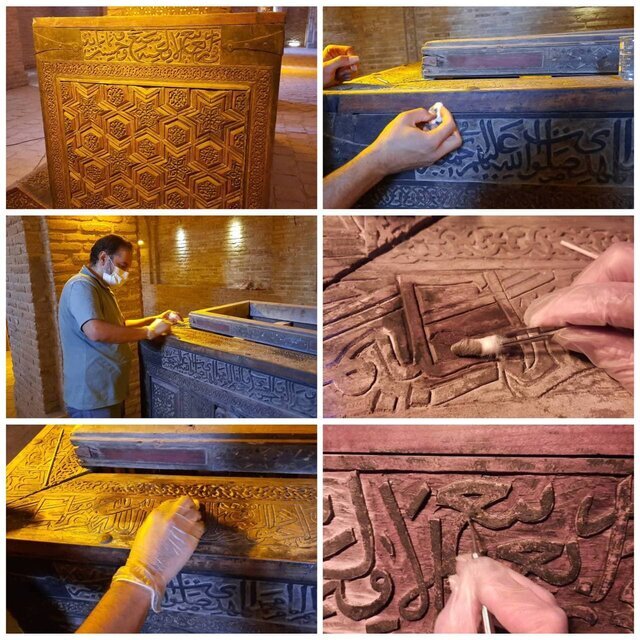Centuries-old wooden box restored to original state

TEHRAN – An exquisite wooden box, which reportedly dates from 580 years ago, has been fully restored to its original state under the supervision of cultural heritage officials in Semnan province.
Being kept at Imamzadeh Taj al-Din, a religious shrine in Parvar village of the northcentral province, the lavishly decorated box dates back to the Teymurid era (1370–1507), provincial tourism chief Hamidreza Doustmohammadi said on Monday.
Documentation, fault detection, and identification of effective factors in its destruction, sampling of various wooden pieces, wood typology, disinfection, initial mechanical and chemical cleaning, etc. were among operations performed during the restoration process of this wooden box, the official explained.
The Timurids were the final great dynasty to emerge from the Central Asian steppe. In 1370, the eponymous founder, Timur (Tamerlane), who belonged to a Turko-Mongol tribe settled in Transoxiana, became master of this province and established Samarqand as his capital.
Within thirty-five years, he subjugated all of Central Asia, greater Iran, and Iraq, as well as parts of southern Russia and the Indian subcontinent. To the west, Timurid forces defeated the Mamluk army in Syria and that of the Ottomans at Ankara (1400–1402). In 1405, while preparing to invade China, Timur died.
The vast empire he carved proved to be difficult to keep; his son and successor, Shah Rukh (r. 1405–47), barely managed to maintain the empire’s boundaries, and subsequent Timurid princes sought to establish their own kingdoms, weakening the empire with internal strife. Eventually, only Khurasan and Transoxiana remained Timurid, and during the remaining years of the dynasty, these were ruled by separate branches of the Timurid family.
By bringing craftsmen from different conquered lands to his capital in Samarqand, Timur initiated one of the most brilliant periods in Islamic art. Timurid art and architecture provided inspiration to lands stretching from Anatolia to India, according to the Metropolitan Museum of Art.
Though Timur’s extensive empire itself was relatively short-lived, his descendants continued to rule over Transoxiana as leading patrons of Islamic art.
Through their patronage, the eastern Islamic world became a prominent cultural center, with Herat, the new Timurid capital, as its focal point. Timurid rulers were sympathetic to Persian culture and lured artists, architects, and men of letters who would contribute to their high court culture.
Many Timurid princes were also prodigious builders—religious institutions and foundations such as mosques, madrasas, khanqahs (convents), and Sufi shrines were the main beneficiaries of their building programs.
AFM
